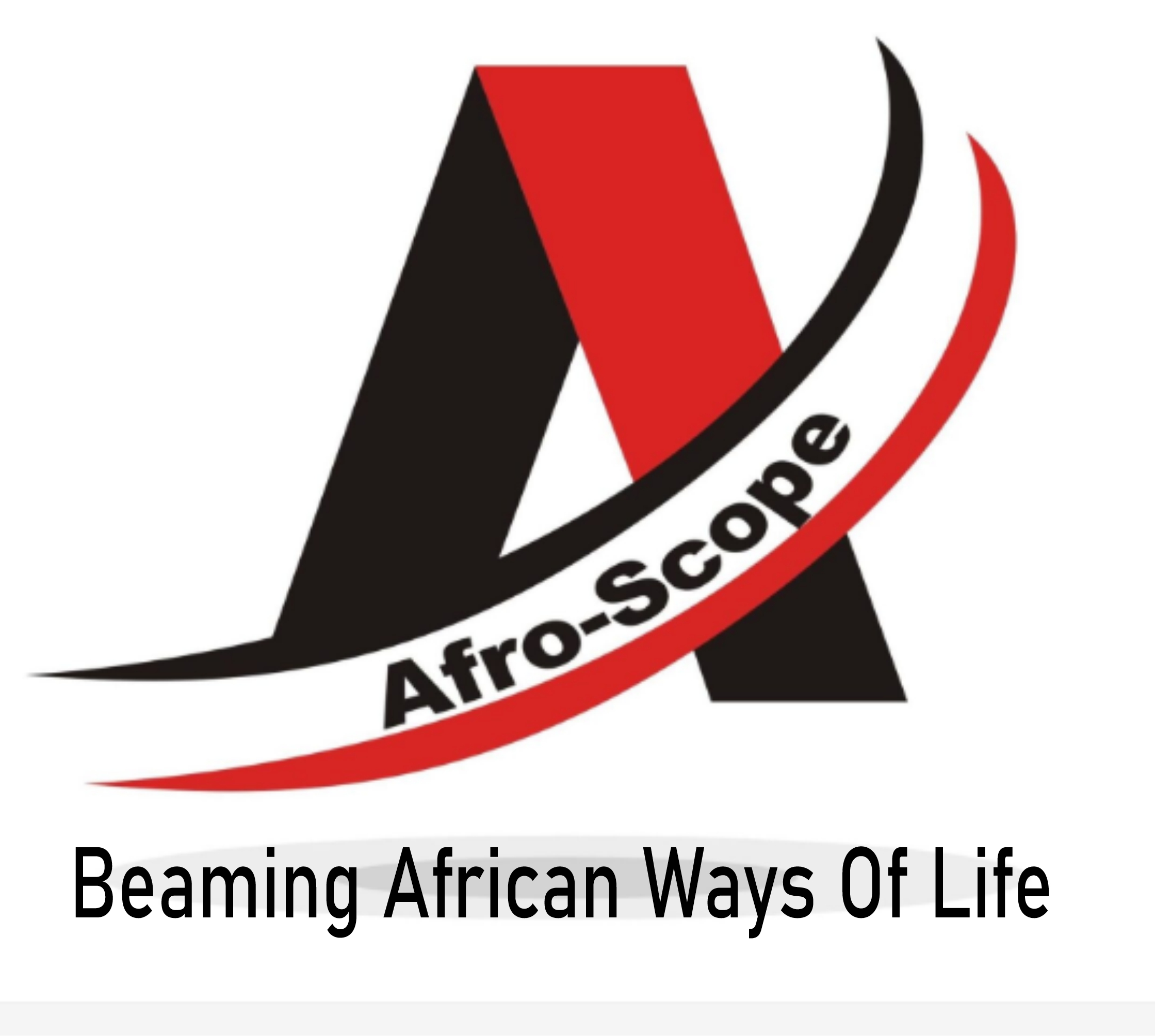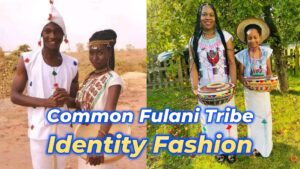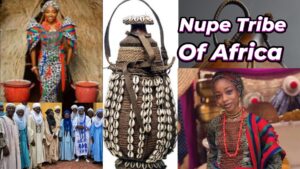July 21, 2022
THE SCIENCE OF NUMBERS AND THE IGBO WORLD-VIEW
Greetings, folks! I am Harry Agina, and I welcome you to the 4th edition of our “AfroCultural TitBits” Category on Afro-Scope.com. This is the 4th edition of our series on Kola Nut, the “Holy-Communion-Nut” of Africa. The idea behind this category is InterCultural Exchange, to enlighten the world on the African culture. We always remind you that this is not just for non-Africans; no sir, no ma’am! You’d be shocked by the number of contemporary Africans, inside the Africa, who don’t know shit about African culture. Umm hum, many people of the Igbo race whose culture reveres kola-nut so much, have confessed to us that they didn’t know anything about 90% of our content on Kola nut so far.
This is the 4th edition. And, without further ado, I introduce our traditionalist, Udoakpuenyi, for more on, “Holy Communion” Kola-nut, thus:
KOLA-NUT, THE “HOLY COMMUNION” NUT OF AFRICA, EDITION 4:
The Science of Numbers And The Igbo Worldview
Ndi Igbo (Igbo people) believe so much in the significance of numbers, and that applies in the celebrating of the kola nuts. Before we get into details, it is essential to note that the parts of a kola nut can be identified as male or female. The female part has a little curvature at the center, where the male projection enters. This is also associated with the human family system, in the sense that a complete family is made up of at least a male and female. An acceptable kola nut for special Igbo traditional rituals must possess a few special qualities. For one, as we stated in edition 1, kola-nut has two different major species—Cola acuminata and Cola-nitida. The species that qualify for traditional ritual must comprise male and female components. The Cola-nitidaspecies does not have male and female; so, it does not qualify.
Parts Of A Kola-nut: As already introduced in a past edition, kola-nuts come in various forms, in terms of the number of parts/pieces that make a whole nut. The parts are joined by natural God-woven seams, which loosely join the natural parts into wholes. There are nuts of only two natural parts, joined loosely together by one seam. And there are nuts with three parts, four parts, up to six parts, sometimes up to seven parts. Importantly, the number of parts of a kola-nut is very significant in the Igbo traditional ritual. We have sample photos of two-part and six-part nuts for you, thus:
Kola nut in a single whole: Some kola-nuts come as single wholes. In other words, they do not have the natural splits that are joined by natural seams, which loosely join the natural parts of two to six pieces. This is common in the Cola–acuminate species, and, such kola-nut is not acceptable in the Igbo-race traditional prayer. It will be rejected as a sign of a bad omen. Symbolically, it is associated with a man or a woman who has refused to be married. This is not encouraging, in a culture that strongly believes in procreation and family values. “A person who does not encourage these values is called an “efulefu,” said Dr Nnabuihe of the Department of Linguistics, at the University of Lagos. This loosely translates to an irresponsible person.
When such a misfit-kola is accidentally presented for a ritual, it is called “Oji-akpuru” or “Oji-ogbi. This means, “Dumb-kola nut,” connoting that it does not communicate any meaning. It is also symbolically seen as a selfish nut that does not want the association with others. Such a kola is rejected by both the guest(s) and the host.
Kola Nut in Two Parts: Two is very significant in Igbo culture, because everything comes in twos—life and death, heaven and earth, water and fire, male and female. In other words, the Igbos believe in the notion of duality in life. When the kola nut has just two parts, it is called “Oji-ụchụ,” meaning, kola nut of bad luck or bad omen—a taboo, if you will. This is because, in the two parts of this kola nut, it is difficult to differentiate the male from the female. This means that the chances of procreation between the couple are remote. Do remember, everything or every meaning is extended to that of the people.
But then, a non-Igbo person should ask the question—If the number 2 is so significant in the Igbo culture, as said above, how come it is a taboo when a kola-nut has only two parts?’ The answer is in the fact that such “misfit” kola-nut is dedicated to the gods of the land. So, it is a taboo to eat what belongs to the gods.
Kola Nut In Three Parts: When the kola nut comes in three parts, it is called “Oji-dike” or “Oji-ikenga.” ‘Dike’ and ‘Ikenga’ both mean hero; so, “Oji-dike” means a hero’s nut. Mostly all the parts are male, no female. The significance of this number, according to Dr. Nnabuihe, becomes visible when titled men (chiefs) exchange greetings with their traditional scepter. Such greetings are usually three times with the back of the hand. Then, they conclude with the front of the hand. It shows that they are titled men. It is only a kola nut with three parts that produces all males, no female. This kola nut can be eaten by everybody if there is no other option. But if there are other nuts of more than three parts, then the three-parts nut is usually reserved for titled men and woman. Anyone who has the privilege of eating these kola nuts takes it that he has/she has enjoyed the special privilege of the heroes.
Kola Nut With Four Parts: This is generally accepted as a good kola for everyone. This kola explains the Igbo worldview a lot. It usually comes in two parts of males, and two females. This signifies a complete family in Igbo culture. A family with all males or all females is not complete. It has to be a combination of both genders, because each gender has a role to play in the family. It could be one male and one female. Others are additions to the family.
Ndi Igbo (Igbo people) have four market days—Eke, Orie, Afo, and Nkwo. They are symbolic of four natural forces of the cosmos—earth, wind, fire and water. This will be a discussion for another episode. This also demonstrates the significance of the four cardinal points—North, South, East and West.
In the traditional Igbo society, a grown person is not buried until after four days, because they assume the person could be in a coma. They know that after four days, if the person is dead, the body must show signs of decomposition, before they take the person out to be buried. That is the meaning of the proverb that says, “Ụra kwere izu anọọla ọnwụ.” This means literally, that “Any sleep that take four days has turned to death.”
Kola nut with five parts: When kola nut comes in five parts, two must be male, and three female. There is no disputing this fact. “When it comes like this,” said Dr. Nnabuihe, “Mbaise people in Imo state of southeast Nigeria think that it is profitable—Ọji nwere uru.”
Kola Nut With Six Parts: When kola nut comes in six parts, it comes as two males, and four females. This is generally considered a good kola nut for everybody. If this happens in Nike community in Enugu state, one of the parts is usually given to the gods. And the rest are eaten by guests and the host.
Kola Nut With Seven Parts: Seven-parts kola nuts are usually very difficult to find. You can find kola nut with eight or even nine parts; but a seven-parts kola nut is considered a very special one. It is not eaten on the day it is served. Both the guest and the host will agree on a special day to celebrate it, because it signifies a good omen. Even at that, on that day, it is celebrated with merriment. Yet, it is sacrificed to the gods, because it belongs to the gods, especially in Ezinachi community in Okigwe town, in Imo state. On that day, both the host and the guest will invite a few of their kinsmen to the occasion. They will bring along some drinks and food to celebrate the kola. Prayers and incantations are said to the gods for long life, good health and wealth. Then, the seven-parts nut(s) are thrown to the gods, and a different nut is broken and eaten by all.
Among the kola with the seven parts, only two will be male while five are female. Even if it is in ten parts, it has to come in two males and several females. This explains why capable Igbo men marry more than one wife. They want to accommodate more women, because, in Igbo cultural belief, every man must get married and every woman must get married. “However, ‘the culture does not accept celibacy or polyandry,” Dr. Nnabuihe said.
Please leave your comment below, and remember to join us in our next journey to explore the clash between polygamy and monogamy in modern African society. Next, on No Bullshitting “AfroCultural TitBits.”
A presentation of Udoakpuenyi
Contributory editing and augmentation by Harry Agina
This concludes our series on kola-nut as the “Holy Communion Nut” of the Igbo people of southeast Nigeria, for now. Yes, for now, I say, because we are just starting on the general subject of kola-nut in Africa. We still have to talk about “Igo-ofo” in Igbo land. It is the traditional prayer that ties “Oji,” the kola-nut, and “Ofo,” the traditional morality staff of the Igbo people.
Besides, we still have to find out who else, if any tribe, has such special reverence and respect for kola-nut, and why. We shall also explore other subjects—plants and animals—which some tribes of Africa revere as the Igbo race reveres kola-nut. However, as we investigate all these for ya, we shall take a break from kola-nut, for the sake of variety. We shall bring you another AfroCultural subject in the next edition. Well, okay I can hardly keep this kind of secret; so, I’ll tell ya. I did promise Udoakpueyni that I would not reveal that he wants to talk about polygamy and polyandry in Africa in the next edition. This narrative series will complement our “AfroCultural Drama” series on polygamy.




